Mama Quilla – Incan Moon Goddess Of Marriage And Fertility Assisted By High Priestesses Of Qoricancha
A. Sutherland – AncientPages.com - We have already acquainted us with Mama Ocllo and Mama Cocha, two great mama divinities revered in ancient beliefs of Inca people.
Apart from these two deities, there is also Mama Quilla (Mama-Kilya), who was the wife of the sun god Inti (Inti was also the second husband of his mother, Pachamama the Earth goddess).
Mama Quilla was the Inca goddess of marriage and fertility, seasons of the harvests, and a highly revered deity who represented women. Image source
She played a significant role as the Mother of the Moon, whose phases revealed the course of time, and the waxing and waning of the Moon were used to calculate monthly cycles, from which the periods for Inca celebrations were fixed.
The Inca people calculated and predicted the course of time and its calendar. Many of their rituals and cultural traditions depended on the lunar calendar, and these celebrations had to be adjusted and coincide with the well-known solar year.
According to the Inca worldview, the Moon was an expression of the divine feminine, magic, emotions, intuition, and also of death and rebirth as it always waxes and wanes every month.
Mama Quilla was the Inca goddess of marriage and fertility, seasons of the harvests, and a highly revered deity who represented women.
She was considered the daughter of Viracocha and Mama Cocha, and Mother of Manco Capac and Mama Ocllo, legendary founders of the Inca Empire and its culture. Among the deities of the heavenly pantheon, Quilla had an equal ranking as her husband, the Sun god, Inti. Quilla accompanies Inti in the same rank in the divine pantheon.
She had four children: Manco Cápac, Mama Ocllo, the Pachacamac, the earth creator god, and god of rain and the South wind, Kon.
Protector Of Women In The Universe
She was the goddess of marriage, the menstrual cycle, feast days, the Inca calendar, and a defender of women.
Therefore, she had many faithful followers who relied on her. No other deity could better understand the women’s desires and fears, and give them the protection sought.
As an essential part of Inca mythology, there was a holiday that usually coincided with the beginning of the rainy season - spring equinox, which was called Quillamama Raymi (or Coya Raymi). Its tradition was traditionally preserved in indigenous communities.
Strange, Metallic Sound Of Priestesses’ Earrings
During the night and in the atmosphere of great silence, women performed all kinds of rituals in Mama Quilla’s name. Mama Quilla was usually depicted as a human female, and images of the goddess included a silver disc covering an entire wall. Her sacred place was located in Qoricancha, Cusco, Peru, and it was the most important shrine in the Inca Empire.
It was illuminated with torches and decorated with sheets of beaten silver and served by its priestesses. The Inca believed that both silver plates and other objects made of this metal attracted the attention of the Moon.
The cult of Mama Quilla was celebrated entirely by women. The priestesses of the Moon – dressed in long gray robes and cloaks covered their head with a thick white wool cap; they wore silver earrings, which released a strange, metallic sound that warned of their presence to men, who were not allowed to look at them.
The priestesses originated from the female elite of Cusco.
Old Tradition Of Coya Raymi Celebration
Coya Raymi Celebration was usually organized once a year in the tenth month of the Inca Coya Raymi calendar (September). During this important holiday, the Moon was worshiped with prayers and small gifts, and it was also necessary to fast during the celebrations.
According to the Inca religion and tradition, the month of September is dedicated to fertility in Andean cultures and is the beginning of the ceremonial agricultural year.
On September 21, Coya Raymi pays tribute to women and fertility and also symbolizes the first step to obtain the fruits of the Earth. It is a particularly important celebration time for all young Inca women because from a young age girls have to prepare for their adult life.
It is to her that Andean women directed their questions about protection for girls, parturient women, and newborn babies.
Written by – A. Sutherland - AncientPages.com Senior Staff Writer
Copyright © AncientPages.com All rights reserved. This material may not be published, broadcast, rewritten or redistributed in whole or part without the express written permission of AncientPages.com
More From Ancient Pages
-
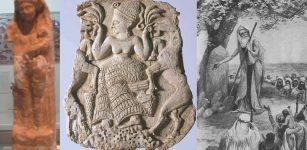 Lost And Forgotten Goddess Asherah – Queen Consort Of The Sumerian God Anu And Ugaritic God El
Biblical Mysteries | Apr 12, 2017
Lost And Forgotten Goddess Asherah – Queen Consort Of The Sumerian God Anu And Ugaritic God El
Biblical Mysteries | Apr 12, 2017 -
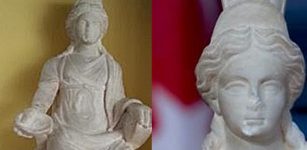 Statue Of Goddess Cybele Looted In The 1960s Returned To Turkey
Artifacts | Dec 22, 2020
Statue Of Goddess Cybele Looted In The 1960s Returned To Turkey
Artifacts | Dec 22, 2020 -
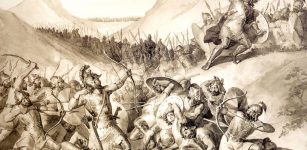 Armenia: Old Land Where Myths, Legends And Long History Meet
Civilizations | Apr 20, 2016
Armenia: Old Land Where Myths, Legends And Long History Meet
Civilizations | Apr 20, 2016 -
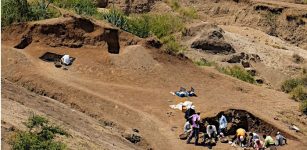 Investigation Of A 2.9-Million-Year-Old Site Reopens Case Of Who Made First Stone Tools
Archaeology | Feb 9, 2023
Investigation Of A 2.9-Million-Year-Old Site Reopens Case Of Who Made First Stone Tools
Archaeology | Feb 9, 2023 -
 Indus Valley Civilization Far Ahead Of Its Time Has Baffled Scientists For Centuries
Ancient Technology | May 18, 2017
Indus Valley Civilization Far Ahead Of Its Time Has Baffled Scientists For Centuries
Ancient Technology | May 18, 2017 -
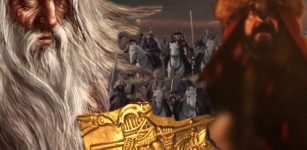 Surprising Connection Between Norse God Odin And Attila The Hun Revealed
Featured Stories | Dec 8, 2020
Surprising Connection Between Norse God Odin And Attila The Hun Revealed
Featured Stories | Dec 8, 2020 -
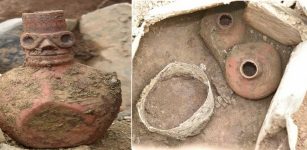 Wari Culture: Ancient Astronomical Observatory Excavated In Cusco, Peru
Archaeology | Dec 20, 2017
Wari Culture: Ancient Astronomical Observatory Excavated In Cusco, Peru
Archaeology | Dec 20, 2017 -
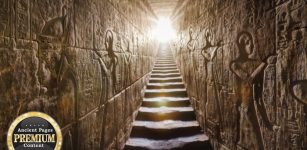 Edfu Texts Reveal Secrets Of Predynastic Egypt And Zep Tepi
Egyptian Mythology | May 27, 2021
Edfu Texts Reveal Secrets Of Predynastic Egypt And Zep Tepi
Egyptian Mythology | May 27, 2021 -
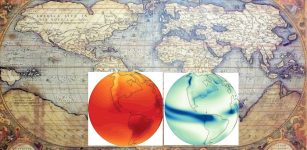 Ancient Maps Reveal What Will Happen With Our Climate In The Future – Scientists Say
Archaeology | Oct 12, 2022
Ancient Maps Reveal What Will Happen With Our Climate In The Future – Scientists Say
Archaeology | Oct 12, 2022 -
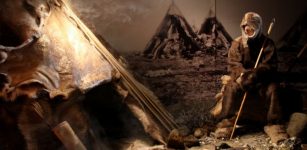 12,000-Year-Old Ice Age Stone Tools Found – Earliest Dated Evidence For Human Activity in Scotland
Archaeology | Oct 10, 2015
12,000-Year-Old Ice Age Stone Tools Found – Earliest Dated Evidence For Human Activity in Scotland
Archaeology | Oct 10, 2015 -
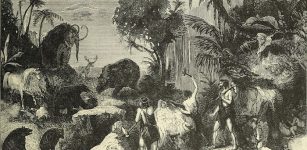 Ancient Human Feeding Behavior Studied By Scientists
Archaeology | Jan 18, 2022
Ancient Human Feeding Behavior Studied By Scientists
Archaeology | Jan 18, 2022 -
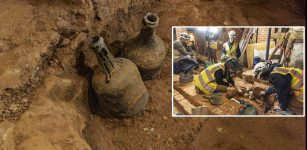 European-Made Sealed Bottles Of Cherries Dated To 18th Century Found At Washington’s Mount Vernon
Archaeology | Apr 23, 2024
European-Made Sealed Bottles Of Cherries Dated To 18th Century Found At Washington’s Mount Vernon
Archaeology | Apr 23, 2024 -
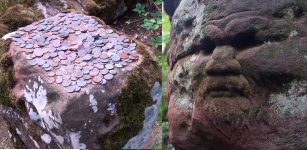 Dunino Den: Mysterious And Sacred Ancient Site In Scotland With Enigmatic Rock Faces And Symbols
Featured Stories | Jan 6, 2017
Dunino Den: Mysterious And Sacred Ancient Site In Scotland With Enigmatic Rock Faces And Symbols
Featured Stories | Jan 6, 2017 -
 On This Day In History: Battle Of Marathon Was Fought – On Sep 12, 490 BC
News | Sep 12, 2016
On This Day In History: Battle Of Marathon Was Fought – On Sep 12, 490 BC
News | Sep 12, 2016 -
 Sophisticated Masonry In Anasazi Dwelling Ruins At Mesa Verde National Park, Colorado, USA
Civilizations | Aug 11, 2015
Sophisticated Masonry In Anasazi Dwelling Ruins At Mesa Verde National Park, Colorado, USA
Civilizations | Aug 11, 2015 -
 Ancient DNA Illuminates Unknown ‘Ghost’ Populations In Sub-Saharan Africa
Archaeology | Jan 22, 2020
Ancient DNA Illuminates Unknown ‘Ghost’ Populations In Sub-Saharan Africa
Archaeology | Jan 22, 2020 -
 First Sumerian Revolt – People Oppose The Harsh Akkadian Empire
Featured Stories | Apr 14, 2023
First Sumerian Revolt – People Oppose The Harsh Akkadian Empire
Featured Stories | Apr 14, 2023 -
 The Black Pyramid Of Amenemhat III – Mysterious Underground Chambers And Lost Ancient Treasures
Featured Stories | Aug 9, 2021
The Black Pyramid Of Amenemhat III – Mysterious Underground Chambers And Lost Ancient Treasures
Featured Stories | Aug 9, 2021 -
 Elusive Legendary Mist Witches Who Can Be As Wise As Dangerous
Featured Stories | Mar 3, 2025
Elusive Legendary Mist Witches Who Can Be As Wise As Dangerous
Featured Stories | Mar 3, 2025 -
 On This Day In History: Anders Celsius, Swedish Astronomer And Mathematician Was Born – On Nov 27, 1701
News | Nov 26, 2016
On This Day In History: Anders Celsius, Swedish Astronomer And Mathematician Was Born – On Nov 27, 1701
News | Nov 26, 2016

